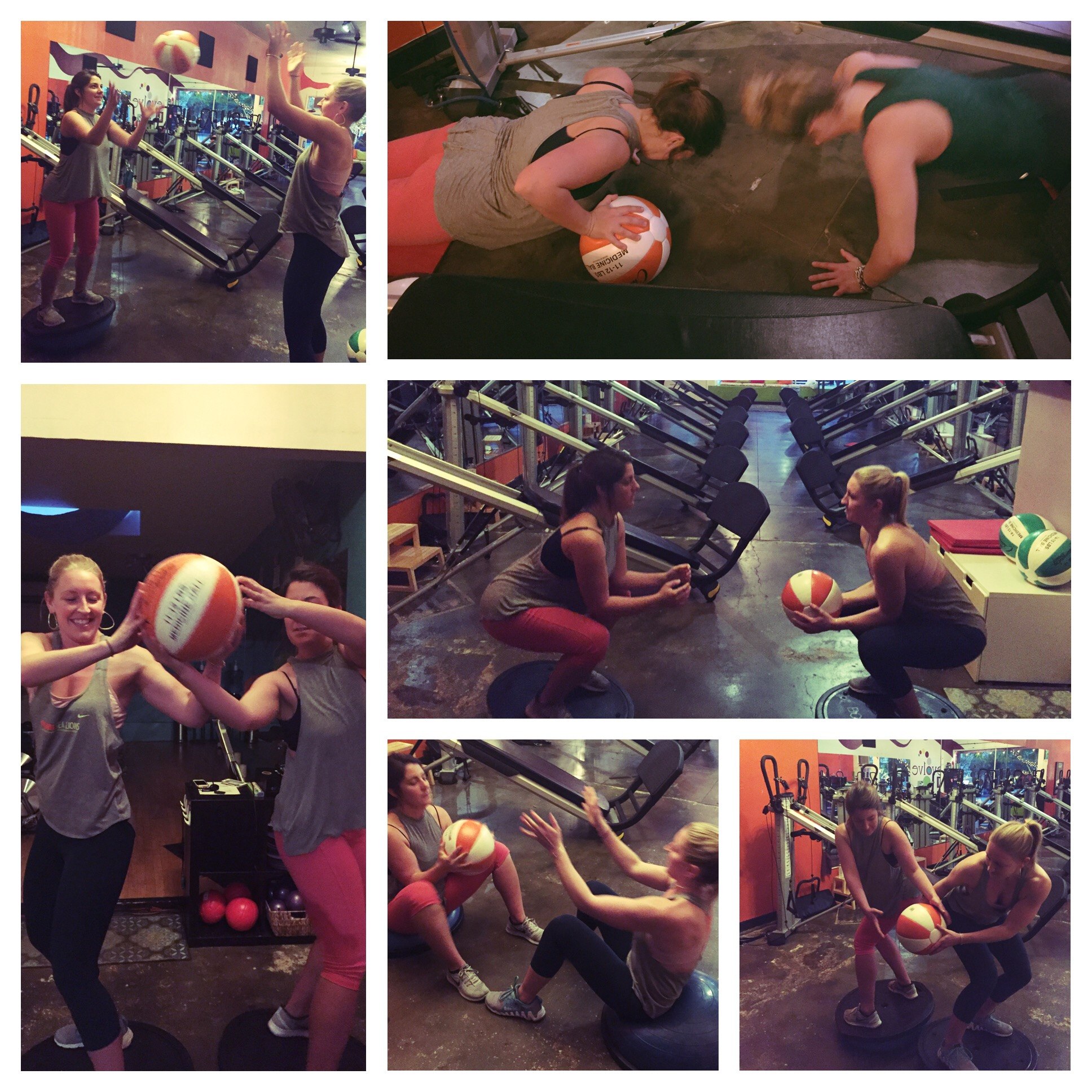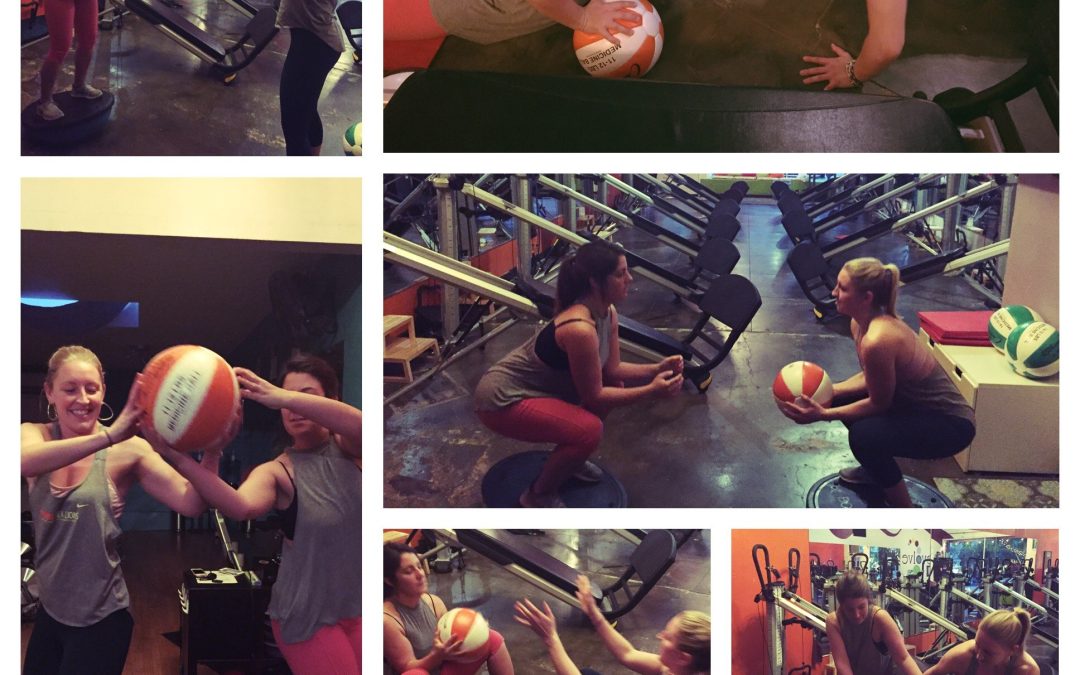The Medicine ball is now a standard accessory in our gyms and in our workouts. We can easily find a variety of wall balls and slam balls, some filled with sand, some stitched kevlar, and some solid rubber meant to bounce like a super-ball. Some medicine ball exercises are fairly straight forward like an overhead press, and some are quite novel like HooverBall. But when and where was the medicine ball developed, and why was it called a medicine ball?
Origins of the Medicine Ball
The earliest known mention of “medicine ball” comes from an article in Scientific American No.689 in 1889. In the article, the author mentions a number of exercise apparatuses that can be found at various “gymnasiums” including flying rings, the trapeze, and the wooden dumbbell.
But then he goes on to introduce the medicine ball, a leather ball stuffed with “hair and twine” to give it weight. The author goes on to give credit for the moniker of the medicine ball to “Prof. Roberts of Springfield” (no first name, position, or mention of what state Springfield is in). Professor Roberts reportedly named the exercise apparatus because of its ability to “restore and preserve one’s health”.
In 1906 William J. Cromie, Fitness Director of the Young Men’s Christian Association (YMCA), published a book titled Exercises with the Medicine Ball. Cromie claims in his introduction that exercise should be “interesting and enjoyable” and goes on in the following pages to introduce a number of exercises, with pictures, featuring a medicine ball.
However, predating all of this there seems to have been use of many various exercise balls in Egyptian, Greek, and Roman athletics, minus the notable moniker of “medicine ball”. There is some evidence that balls were used for exercise at least as early as the 4th century A.D. A famous mosaic that features women who seem to be exercising in bikinis in an ancient villa is known as the Sala delle Dieci Ragazze. The women are depicted tossing two different-sized balls in a playful way. A consensus of research agrees that exercise was important in the Roman empire at that time, even among women.
Using the Medicine Ball
In 1929 physician Joel T. Boone prescribed exercise to president hoover in the form of a game. This game came to be known as Hooverball. Similar to volleyball, a player will hurl a medicine ball over a net and their opponent would catch it and throw it back. President Hoover used a 6 lb medicine ball, but in its more recently-renewed popularity, Hooverball is being played with medicine balls up to 20 lbs.
Exercise modalities like CrossFit, boot camp classes, and obstacle course races are making good use of various medicine balls as well. A popular exercise involves a “wall ball” slam with a squat for a high volume of repetitions. Participants hold the ball in the rack position (in front of the chest), squat then explode up push the ball at the same time, attempting to hit a target on the wall that can be anywhere from 6-12 feet up. This can be done with a heavier ball, or something lighter depending on the participant or setting.
The various types of medicine balls being manufactured and sold offer a number of use options as well. For example, rubber medicine balls can be used to slam on the ground. They are durable enough to withstand the impact but also bounce just enough for the user to repeat with good form—a great aerobic, arm, and core workout if done right. Or some extremely heavy balls up to 200 or more lbs, filled with sand, that can be used for heavy carries or “over the shoulder” tosses.
THROW a few medicine ball movements into your or your clients’ workout this week for some variety and fun.
The medicine ball has become a staple in most gyms. You can do infinnite exercises with a medicine ball and they don’t take up much space. Anybody can use them and benefit from them, regardless of training age or ability. One of my favorite ways to get clients to develop more power is through the utilization of medicine ball throws and slams.
Unlike Olympic lifts, throwing medicine balls are easier to pick up and use. Additionally, this form of training is one of the only tools to develop torso power. Developing torso power is essential for tennis and golf athletes (just to name a few) and even for general fitness clients just wanting to be more fit, active, and injury resistant. All ages and fitness levels can pick up and train with medicine balls.
Benefits of Med Ball Training
Power training via plyometrics and Olympic tend to focus on a singular plane of motion while power training with med ball can allow your client to work through multiple planes of motion on a single throw. Plyometrics and Olympic lifts certainly have their place in training but neither can have the same effect on core power.
Types of Medicine Balls
There are two types of medicine balls, one that bounces and one that doesn’t bounce. The medicine balls that bounce are great for developing concentric power only. Probably the best application for this type of ball would be to throw in a wide-open space. The medicine balls that I use for clients are the non-bouncing balls. This is because you can throw the ball as hard as you can (concentrically) against a masonry wall (or reinforced wall) and it will have very little rebound effect coming back to you, making it beneficial for eccentric power and safety of catching off the wall (without risk of face injury!).
Considerations for Medicine Ball Training
In order to get the most benefit from medicine ball throws, it’s important to throw the ball hard and to be aggressive. Power is the product of strength and speed {P=(Force × Distance) ÷ Time} so it would make sense to get the medicine ball from point A to Point B as fast a possible.
The second consideration would be to keep repetitions on the lower side– 20-30 total throws per workout which permits focus to remain more on the quality of throws versus chasing fatigue. Always opt for a lighter medicine ball because you can throw a lighter ball faster than you can a heavy ball which is the whole point of power: think speed!
Lastly, with any type of power work, try to do it at the beginning of the workout when your client is most fresh and it will work the nervous system more efficiently.
Start Using a Medicine Ball
Medicine balls can be a much safer and easier tool to implement for all ages and abilities than other heavy equipment. Remember to consider the ball that you are using (bounce vs non-bounce balls) and train smart: fewer repetitions, throw hard as if you were trying to break through something (like the wall or floor), and use a lighter ball versus a heavier ball. Have your clients implement medicine balls in their training and help them to become more powerful!
Solo Medicine Ball Exercises
Rotational Scoop Throws
Close Facing Throws
Overhead Step and Throws
Shotput Rotational Throws
Ball Slams
Diagonal Ball Slams
Partner Work
Personal trainers often need to think of fun ways to keep fitness partners engaged, and what better way than to do so with a medicine ball and/or a half-ball (otherwise known as a BOSU). All of the exercises mentioned below can also be done as static exercises by simply taking the half-ball out of the equation.
To begin, clients should go through their regular warm-up and select a medicine ball weight that they are comfortable working with.
The following five exercises are great for partners using both a medicine ball and a BOSU ball.
Squat ball toss
Partners each stand on their own BOSU and begin with a few squats to become comfortable with their balance.
Then, the medicine ball is introduced.
Both participants squat, and as they come up, the one holding the ball tosses it up and away. The other partner catches and repeats. It is important to cue the weight to stay between the heals and ball of the foot, and to engage the core muscles, glutes, and quads. Not only is this exercise is great for balance, but it will work the abs, delts, biceps, quads, and hamstrings.
Crunch ball toss
Partners each sit on their own BOSU towards the front and with their toes touching.
They should do a few crunches first to prime the abs.
As soon as the base of their shoulder blades reaches the back of the ball, they crunch up.
After a few repetitions to get steady, the medicine ball is added in.
Each participant rolls back into a crunch and, on the forward motion, one will toss the ball to the other person. The cue should focus on a tight core, breathing out on the way up and while tossing the ball to engage the core properly, and keeping flat feet on the floor.

Torso twist ball pass
For this exercise partners bring their BOSU balls close together and stand facing away from one another.
The ball is held slightly away from the body to engage the core and upper body muscles. As partners twist to the side towards each other, one will pass the ball to the other, then twist all the way to the other side, passing the ball back. Repeat going in both directions.
This is great for the obliques, abs, transverse abs, delts, quads, adductors, abductors, and low back.
Back-to-back, high-low pass
Just as the partners do in the previous exercise, arrange two close BOSU balls, partners standing on top, facing each other.
Partners squat low and pass the ball low. Then they stand up and pass the ball up high.
Weight in between heels and forefoot, knees should not lock out at the top. Use the abs, obliques, serratus, delts, glutes, quads, and hamstrings for this exercise.
Push-up ball pass
Partners have the option of placing the BOSU under their toes, or they can put it under their knees to regress.
Both participants start with hands are on the floor directly below the shoulders in push-up position. One partner will place a hand on the medicine ball (which will raise that hand higher than the other while resting on the ball). They each do a push-up. After one push-up, the partner with the ball rolls it to the other partner to then do a push-up on the ball.
The core should be engaged to support the spine. The pectorals, delts, biceps, triceps, rhomboids, traps, and lats are all being worked in this exercise.
[sc name=”functional” ][/sc]
These are just a handful of ideas to get you started with exercises utilizing weighted balls and balance trainers. The possibilities are endless. What unique and fun exercises have you come up with?
References
physicalculturestudy.com/2020/01/29/the-long-history-of-the-medicine-ball/
https://www.ncbi.nlm.nih.gov/pmc/articles/PMC8008713/
http://theleanberets.com/wp-content/uploads/2017/02/2002-The-Medicine-Ball-THOMAS.pdf
https://babel.hathitrust.org/cgi/pt?id=coo.31924071607323&view=1up&seq=181
https://archive.org/details/exerciseswithmed02crom/page/n5/mode/2up


